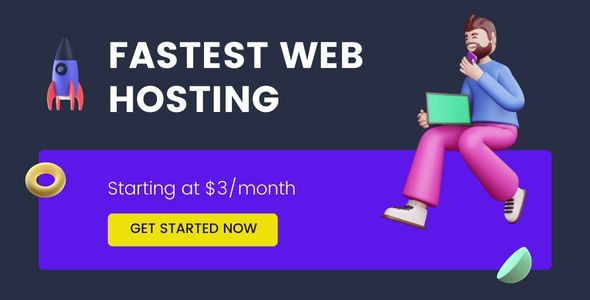views
A Complete Guide to Optimize for SEO Success
Search engines, particularly Google, aim to provide the most relevant results for each search query. As a result, optimizing for search intent can significantly improve your rankings and drive targeted traffic to your website.
What is Search Intent?
Search intent (also known as user intent or query intent) refers to the purpose behind a user's search query. It’s the "why" that drives a person to type something into a search engine. Search engines, especially Google, have become increasingly sophisticated at understanding user intent and delivering results that match it.
When users search online, they usually have a specific goal. Understanding these goals helps you create content that satisfies the needs of your audience while aligning with search engines’ algorithms.
For example:
- A user searching “how to bake a cake” likely wants an instructional guide.
- A search for “buy DSLR camera online” indicates a desire to make a purchase.
Types of Search Intent
There are four primary types of search intent:
-
Informational Intent: The user is seeking information. These searches are usually broad and cover topics like "what is SEO?" or "how to optimize a website for search engines?"
-
Navigational Intent: The user is looking for a specific website or brand. For instance, "Facebook login" or "YouTube homepage" are navigational queries.
-
Transactional Intent: These queries show that the user is ready to make a purchase. Examples include “buy running shoes online” or “best deals on laptops.”
-
Commercial Investigation Intent: The user is researching products or services before making a purchase. Examples include “best smartphones 2024” or “compare laptops under $1000.”
Understanding these types of search intent can guide your SEO strategy and help you create content that aligns with your audience's needs.
Why is Search Intent Important for SEO?
Search engines, especially Google, are constantly evolving their algorithms to deliver better search results. One of the key factors they consider when ranking pages is whether the content satisfies the user’s search intent.
Here’s why search intent is crucial for SEO:
-
Improved User Experience: When your content aligns with the search intent, users are more likely to engage with it. This leads to longer session times, lower bounce rates, and more satisfied visitors.
-
Higher Conversion Rates: If your content matches transactional or commercial investigation intents, visitors are more likely to convert into customers, whether that’s through purchases, sign-ups, or inquiries.
-
Better Rankings: Google prioritizes content that satisfies user intent. If your content consistently matches the search intent behind queries, it’s more likely to rank higher in search results.
-
Reduced Bounce Rate: A mismatch between content and search intent can result in users leaving your site quickly, leading to a higher bounce rate. Optimizing for search intent keeps users engaged, which can positively affect your rankings.
How to Optimize Your Content for Search Intent
To create content that aligns with search intent, follow these actionable steps:
1. Identify the Intent Behind Keywords
The first step is keyword research, but with a focus on search intent. For each keyword or phrase you target, ask yourself:
- What does the user want? (e.g., information, a product, a solution)
- What type of content will best serve that intent? (e.g., blog posts, product pages, guides)
Use tools like Google Search, SEMrush, or Ahrefs to analyze the top-ranking pages for your chosen keyword. This helps you understand the dominant search intent for that query.
2. Match the Content Format to the Search Intent
The format of your content should reflect the user’s search intent. Here’s a guide:
- Informational intent: Create in-depth articles, blog posts, or how-to guides.
- Navigational intent: Ensure your homepage or a specific landing page is optimized and accessible.
- Transactional intent: Optimize product pages, sales copy, and calls-to-action.
- Commercial investigation intent: Create comparison articles, reviews, or best-of lists.
3. Use Clear and Concise Language
Content clarity is key when it comes to optimizing for search intent. Ensure your writing is straightforward and answers the user’s question quickly. Use subheadings, bullet points, and short paragraphs to improve readability.
4. Focus on User Experience (UX)
Search engines consider how users interact with your site when ranking it. To keep users engaged, ensure:
- Your site is mobile-friendly
- Pages load quickly
- Content is well-organized
- Navigation is intuitive
A positive user experience contributes to better search rankings, as Google rewards sites that deliver helpful, user-friendly content.
5. Optimize Your Meta Data
Your meta titles and descriptions are the first thing users see in search engine results. These elements should clearly convey the intent of your content and encourage clicks.
- Meta Title: Make sure your title reflects the main topic and search intent of the content.
- Meta Description: Summarize the content clearly, addressing the user’s potential question or need.
6. Update and Optimize Content Regularly
Google values fresh, updated content. Regularly review your high-ranking pages to ensure they still align with the current search intent. Updating statistics, adding new insights, or improving the format can keep your content relevant and competitive.
Practical Examples of Optimizing for Search Intent
-
Informational Query: If a user searches “how to lose weight,” the content should focus on actionable advice, such as diet tips or exercise routines. Including a video tutorial or infographics can further enhance the user experience.
-
Transactional Query: For a search like “buy running shoes,” the ideal landing page would showcase product listings, include reviews, and provide an easy-to-follow checkout process.
-
Commercial Investigation: If a user is looking for “best laptops for video editing,” a comparison article with detailed product features, pros and cons, and customer reviews would be appropriate.
FAQs about Search Intent and SEO
Q: How does search intent affect keyword selection?
A: Search intent helps determine which keywords to target. By analyzing the purpose behind a search, you can choose keywords that better align with what your audience is looking for, improving both rankings and engagement.
Q: Can search intent change over time?
A: Yes. As user behavior evolves, so can search intent. For example, a keyword that once had informational intent might shift towards commercial investigation as new products or services become available.
Q: Is it possible to rank for multiple types of search intent?
A: Yes. However, it’s more effective to create separate content for different types of search intent. Trying to satisfy multiple intents in one piece of content can dilute its effectiveness.
Q: How does Google determine search intent?
A: Google uses machine learning and algorithms to analyze search queries and user behavior. It evaluates click-through rates, dwell time, and how users interact with search results to better understand intent.
Q: What tools can I use to analyze search intent?
A: Tools like Ahrefs, SEMrush, and Google Keyword Planner can help you analyze search intent by showing you the top-ranking pages for a keyword and the types of content that perform best.
Conclusion
Understanding and optimizing for search intent is critical for SEO success. By aligning your content with the needs and desires of your audience, you can improve your search engine rankings, reduce bounce rates, and ultimately drive more conversions. Keep monitoring and adjusting your SEO strategy to ensure it meets evolving user intent and search engine algorithms.
This guide is just the beginning. Now that you understand the importance of search intent in SEO, start applying these strategies to enhance your content, attract more traffic, and boost your online presence.
Read more also: Maximizing SEO with AI to Generative AI's Role in Search Optimization





















Comments
0 comment